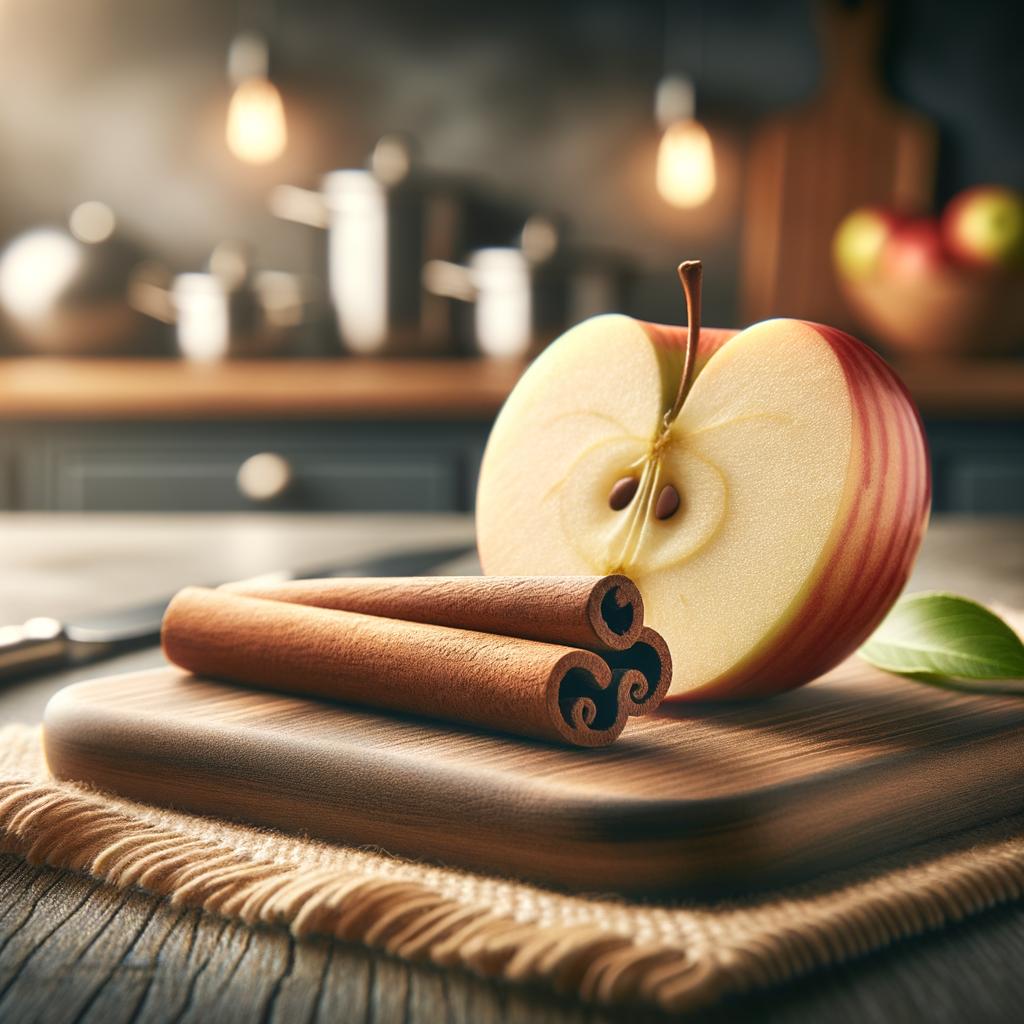Apple Slice and Cinnamon Stick

Apple Slice
Description An apple slice is a piece cut from an apple, a fruit that is universally recognized and adored. The apple's skin is smooth and can range in color from rosy red, to sunny yellow, to vibrant green. The flesh of the apple is crisp and juicy, providing a satisfying crunch with each bite. Apple slices have a sweet, slightly tart flavor that can vary depending on the variety of the apple. What sets apple slices apart from other fruit is their versatility - they can be enjoyed raw, cooked, baked, or even dried.
Primary Uses Apple slices are a staple in many types of cuisine, from American to European to Asian. They can be eaten raw as a healthy snack, or used in cooking and baking. Apple slices are a key component in many dishes, such as apple pie, apple crisp, and apple strudel. They can also be used in salads, sauces, and even drinks like cider and cocktails. Beyond culinary uses, apples have been used in traditional medicine for their health benefits, and they hold a strong cultural significance in many societies, symbolizing knowledge, health, and abundance.
History The apple has a rich history dating back thousands of years. Originating in Central Asia, apples have been part of human diet for millennia. The apple tree was one of the earliest to be cultivated by humans, who spread its cultivation throughout the world. Apples have been featured in many myths and legends, from the biblical forbidden fruit in the Garden of Eden, to the golden apple in Greek mythology. Over time, the popularity of apples has only grown, with thousands of varieties being cultivated worldwide today.
Nutritional Information Apple slices are packed with nutrients. They are a good source of dietary fiber, vitamin C, and antioxidants. They also contain small amounts of B-vitamins, calcium, potassium, and magnesium. Eating apple slices can help improve digestion, boost immunity, and reduce the risk of chronic diseases. Compared to other fruits, apples have a lower calorie count and are free of fat and cholesterol, making them a healthy choice for a snack.
Cinnamon Stick
Description A cinnamon stick is a spice obtained from the inner bark of several tree species from the genus Cinnamomum. It is brown in color, with a rough texture and a cylindrical shape that curls into a spiral as it dries. Cinnamon sticks have a warm, sweet, and slightly spicy flavor that is instantly recognizable. They are unique for their aromatic fragrance and their dual role as a spice and a decorative element in food presentation.
Primary Uses Cinnamon sticks are used in both sweet and savory dishes across a range of cuisines. They are a key ingredient in many spice mixes, such as garam masala in Indian cuisine and pumpkin pie spice in American cuisine. Cinnamon sticks are also used to flavor drinks like mulled wine, hot chocolate, and chai tea. In traditional medicine, cinnamon has been used for its anti-inflammatory and antimicrobial properties.
History Cinnamon has a long and romantic history that dates back to ancient Egypt, where it was considered a precious commodity and used for embalming. It was also mentioned in the Bible, and was highly prized in medieval Europe for its culinary and medicinal properties. The search for cinnamon was a major factor in world exploration during the 15th and 16th centuries. Today, cinnamon continues to be a beloved spice around the world.
Nutritional Information Cinnamon sticks are rich in antioxidants and offer a host of health benefits. They contain a compound called cinnamaldehyde, which is responsible for many of cinnamon's medicinal properties. Cinnamon has been linked to reduced risk of heart disease, improved insulin sensitivity, and anti-inflammatory effects. It also contains small amounts of fiber, calcium, iron, and vitamin K. Compared to other spices, cinnamon has a unique nutritional profile due to its medicinal compounds.

